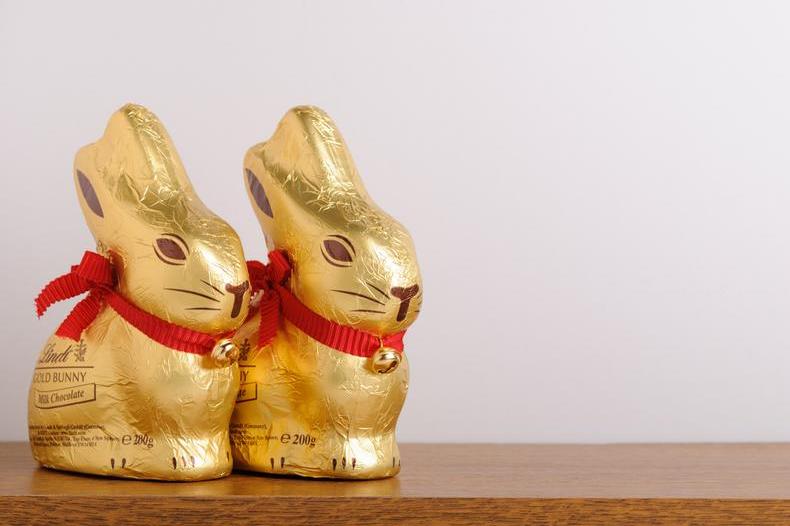How to achieve eggscellent Easter protection
What better way to get into the mood for overindulging in chocolate eggs and hot cross buns than to consider the many types of intellectual property (IP) and surrounding rights that underpin our Easter Eggstravaganza?

Chartered Trade Mark Attorney Vanessa Harrow explores the IP rights and brand strategies that underpin these popular Easter treats.
Whilst the traditional chocolate egg is the staple of the supermarket this season, those seeking to stand out a little more on the shelf have looked to new product development to bring some variety to the offering.
Whether it is eggs which have other treats encrusted into them, eggs which blend or mix different flavours or types of chocolate or even high-end super thick eggs, the developments to try to win consumers over have led to lots of novel things to sample – and all the more reason to buy more eggs!
Inventive en-oeuf?

Underpinning these novel offerings may be all manner of IP rights: it may be that this new type of product will be given a suitably evocative name which could be registered as a trade mark, that the particular recipe or manner of production is protected by trade secrets or even that the process of making it is sufficiently inventive to warrant a patent to provide an effective monopoly over the innovation.
Similarly, if there is something particularly aesthetic about the resulting product it might be the case that this will be shown off and become a particular feature of the product so that design protection – particularly registered designs – will be an important part of protecting the overall product.
For some innovations, it may be that although the product is cracking (can you see what we did there?) the customer would need a nudge to try this novel product – that they would need some extra work by the producer to enable the consumer to trust that they will like the end result. This is where strong branding comes in: the decision of the brand owner is whether to market this as a wholly new product, make it a sub-brand of an existing product or perhaps licence in a known brand as an “ingredient” brand for it.
The trend in consumer goods seems to be to move towards a smaller number of “superbrands” which have sub-brands, and in food and drink we also see lots of licensing to produce innovative products – who would have expected the MARMITE easter egg which appeared on shelves in 2019?
A whole new category?

Of course, for those who want to escape the crowded waters of the traditional egg market, the question is whether to create a whole new product category – to ditch the egg and instead focus on something else.
One company that has really grasped this is Lindt, which produces not just eggs but also rabbits at Easter and other chocolate items (a chocolate teddy and a particular version of a chocolate Santa Claus at Christmas). The Lindt Golden Rabbit has been the subject of a large amount of dispute in Europe, with Lindt having been involved in a dispute regarding an application to protect the overall shape and appearance of a wrapped “gold” rabbit.
Lindt owns a large range of trade marks covering not just a “wrapped” chocolate bunny with a ribbon and bell around its neck (the way they traditionally market the product) but also the shade of gold they use across their bunnies and bears, the “unwrapped” bunny, the bunny without the ribbon and bell, and the ribbon and bell itself.
Part of the controversy in this level of protection came from the fact that, in some parts of Europe, other entities had been offering chocolate rabbits on the market for many years; of course, in other countries, the entry of these products might serve to create a whole new “tradition” and be a novel entry which catches the attention of consumers keen to share new trends on social media.
Where a whole new category is created it may be – with appropriate trade mark protection and policing of the term – that a company could take a leading and unassailable position in this clear blue ocean. Whilst the shape or appearance of this new item may be difficult to protect as a trade mark from the outset, registered designs may offer a significant level of protection (particularly where the design departs significantly from other designs).
Hollow ethical promises?

A further trend in food and drink with IP considerations is the question of ethical production – both the ingredients/manner of production and the nutritional aspects of the treat.
The history of chocolate is one wrapped up with unethical practices and a struggle to move away from the mistreatment of communities and lands far from the consumer. Consumers are often aware of the ethics of chocolate and a range of certifications and brands exist to demonstrate to consumers the ethical credibility of the producers. This includes brands such as FAIRTRADE and RAINFOREST ALLIANCE, as well as the SOIL ASSOCIATION mark and ORGANIC.
Alongside the chocolate itself, producers of Easter eggs might also seek to engage in branding around the sustainability of the packaging. This might be structured around the existing recycling systems or of course they may go somewhat further in their innovations around the packaging and create their own branding to reflect their ongoing work in this area – and perhaps seek further protection for the innovations as registered designs or via patent protection.
Cru-shell protection
In exploiting the commercial opportunities around Easter, food companies clearly have the opportunity to create real value for consumers. At a time when products are gifted and may be of higher value, businesses can not only realise higher margins but also benefit from opportunities for brands to be introduced to new consumers (the person receiving the egg may not usually eat that brand of chocolate).
IP is at the heart of the innovations and brand positioning these companies may use, and it is interesting each year to see how creative companies use their IP to leverage this annual celebration.
Vanessa Harrow is a Chartered Trade Mark Attorney and Managing Director – Trade Marks at Novagraaf UK.


